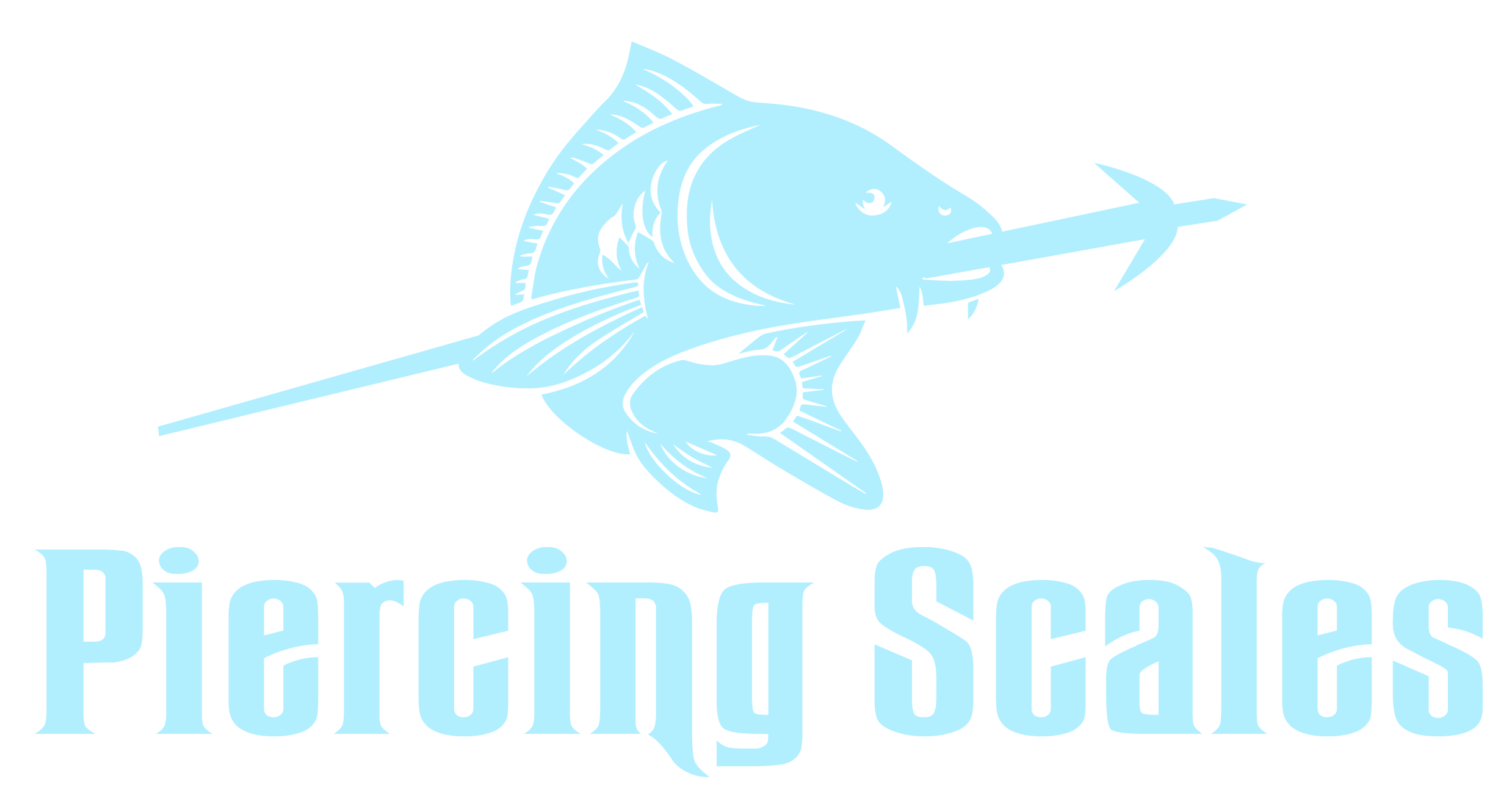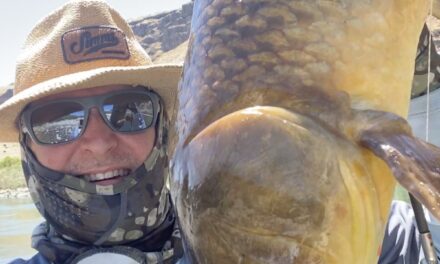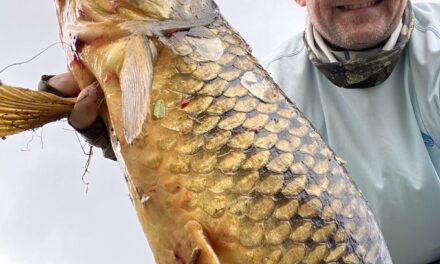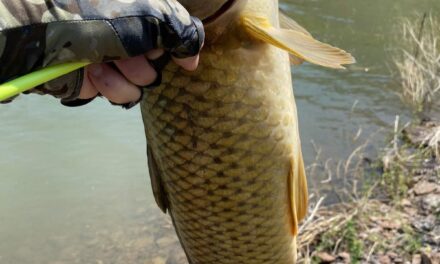The reservoirs and rivers sure have been fun lately. I got an early start today and ended up at the water’s edge by around 10:30am. There were carp patrolling the shoreline, so I grabbed my bow.
The fish were extra spooky today, and that might have something to do with the fact that the water was clearer than it has been over the last few weeks.
I wasn’t getting what I’d consider good shots. They weren’t low probability shots, just not high probability.
I kept moving south, and ended up at the spot where I’d shot two carp last week. But, there were no good shots there either.
Continuing the search, I walked up and over a small hill to a bay where I saw some disturbance in the water. I saw several nice carp.
I crouched at the water’s edge, but the fish were too far away for a high probability shot. So, I crept along the shoreline to get a little closer.
The fish didn’t seem to notice me, so I took a shot and connected!
There was a small but distinct cloud of blood behind the carp after the arrow penetrated the fish.
Here’s a picture of the carp after I landed it. The arrow had shot right through the gill plate, which explains the blood.
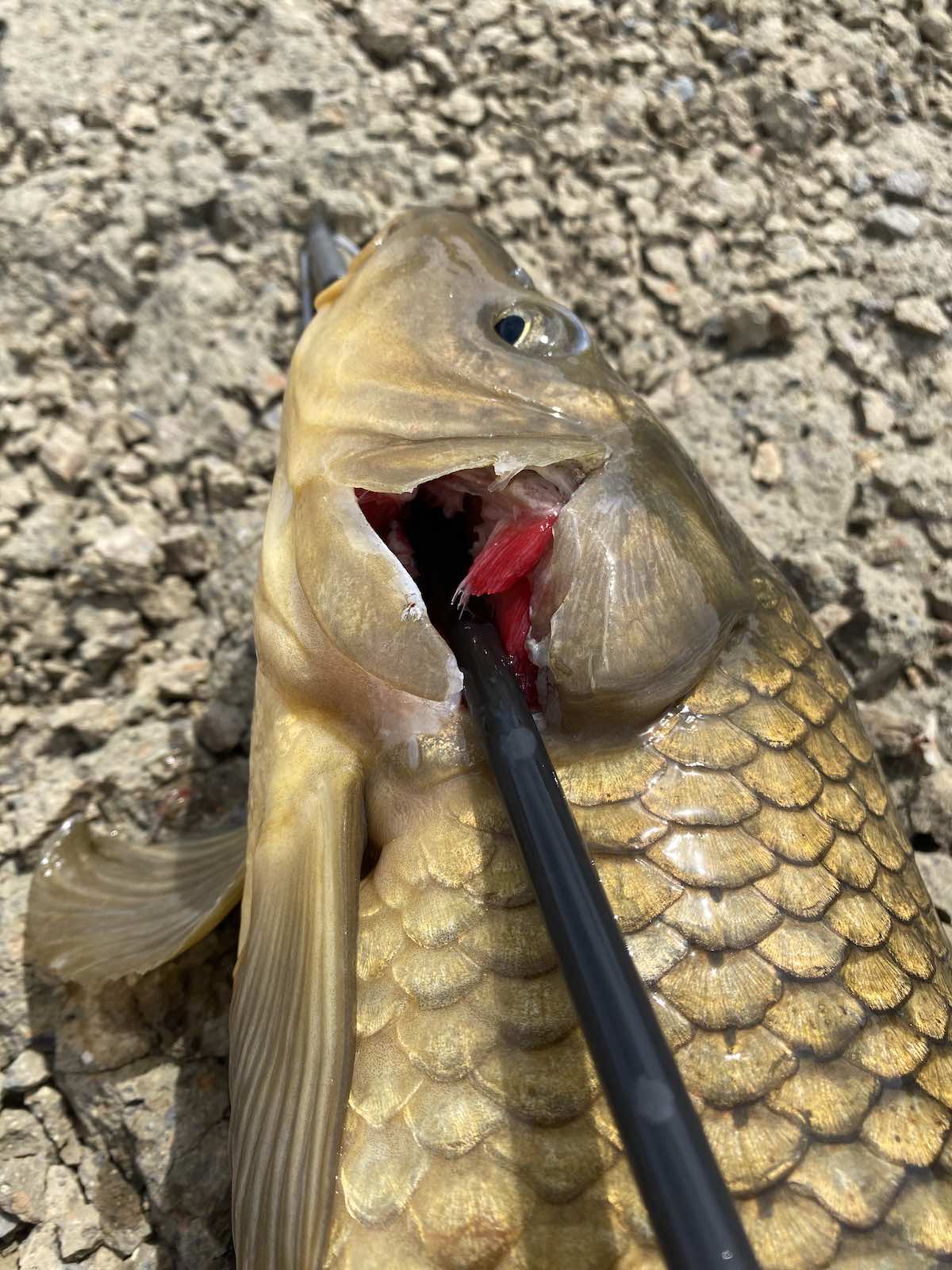
I wanted to put this fish out of its misery quickly, so I used a medium-sized rock to apply blunt force twice.
I went on to stalk along the adjacent shoreline, and about five minutes later this fish flipped itself into the water.
It was impressive, but also a learning experience. Clearly I wasn’t effective with the rock. I’ll need to apply more force, with a heavier rock, going forward.
A very nice carp was ambling towards me as I crouched along the sandy beach-like water’s edge. As the fish came into range, I half stood up and took a shot.
Bullseye!
The large carp bolted and took out drag from my Muzzy reel. It was a strong fighter, but after about 60-seconds, I directed the fish up towards the shoreline about 15-feet away from me.
I instantly realized I had made a mistake. It clicked in my mind that the fish would be able to flip and flop much more easily in four-inches of water. And sure enough, seconds later, that’s exactly what happened.
The carp threw the arrow and bolted.
But, a good bowfishing lesson learned: Don’t beach a fish unless you’re right there ready to grab the arrow or the fish.
I ended up moving back up over the hill to scout the other side. I found a bend, and crouched down.
It probably wasn’t more than 4-5 minutes before a good-sized carp was coming towards me.
Using the same method, I waited, then half-stood and shot my arrow.
Bullseye!
The fish took off for the depths, several times, but I pulled it into the shoreline—this time right next to me.
Here are a couple pictures of the beautiful carp.
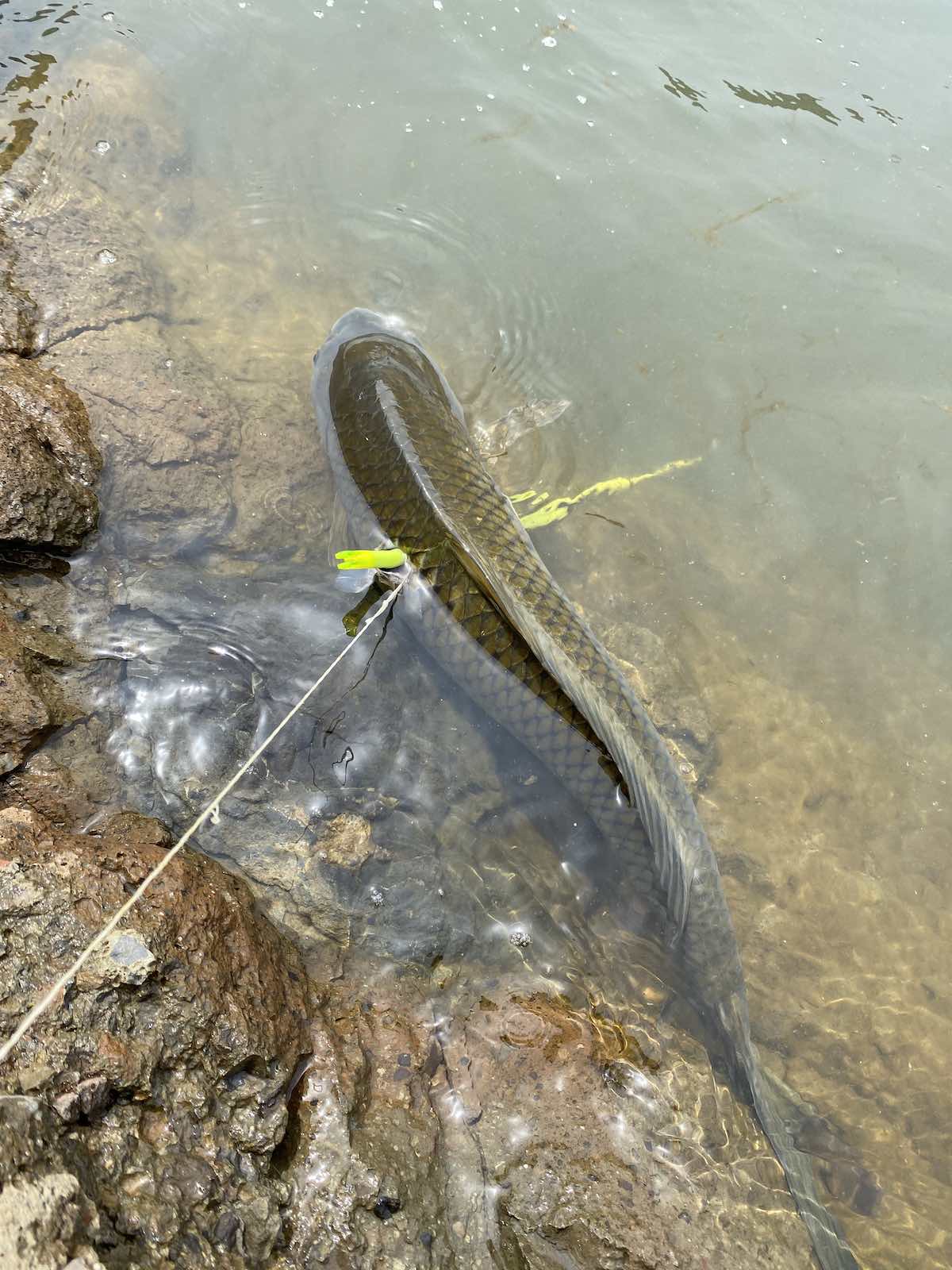
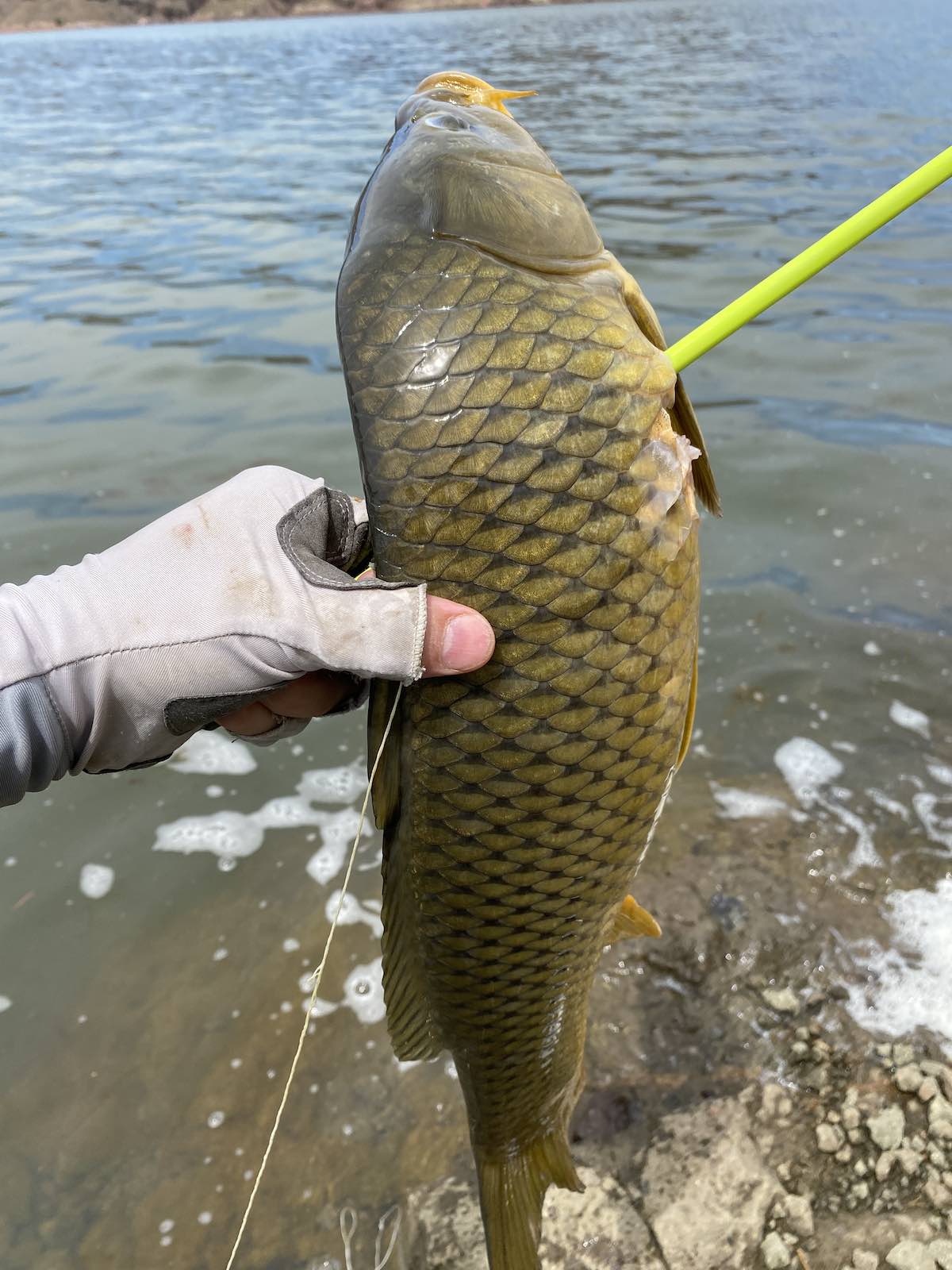
Continuing my bowfishing patrol of the shoreline, I spotted three carp in a somewhat tight formation, and not too far offshore.
After approaching slowly and quietly, I took a shot.
But, my arrow stopped in mid-flight about ten feet away, and my Muzzy reel handle went flying into the shallow water several feet in front of me.
What on earth just happened?
It turns out, the reel handle assembly was literally sheared off. I couldn’t fix it in the field, and so I was done bowfishing at just 2pm.
Disappointing!
I wasn’t able to find replacement parts online, so I had to buy a new Muzzy Tournament reel. I also did my best to repair the damaged reel to keep as a backup.
I really wish I knew what happened. If I had to guess, I’d say the line somehow got tangled up with the reel handle. But why did 10-feet of line shoot out first?
It’s worth mentioning three eye-opening things I learned while reading an excellent bowfishing book called Practical Bowfishing by William Hovey Smith. I highly recommend you buy this book.
- Carp are soft-skinned and notorious for pulling arrows out. (This answers my question of why so many carp were throwing my arrows.)
- If you shoot a fish that’s around 35lbs, it’s best to pull the fish in by hand, rather than risk damaging the reel by putting too much of a load on it.
- If you see 20 fish while bowfishing during the daytime, you’ll likely see 200 at night. Carp are much more active at night.
After reading #3, I’m really looking forward to trying bowfishing at night, which I’ve never done.
